#national statuary hall collection
Photo
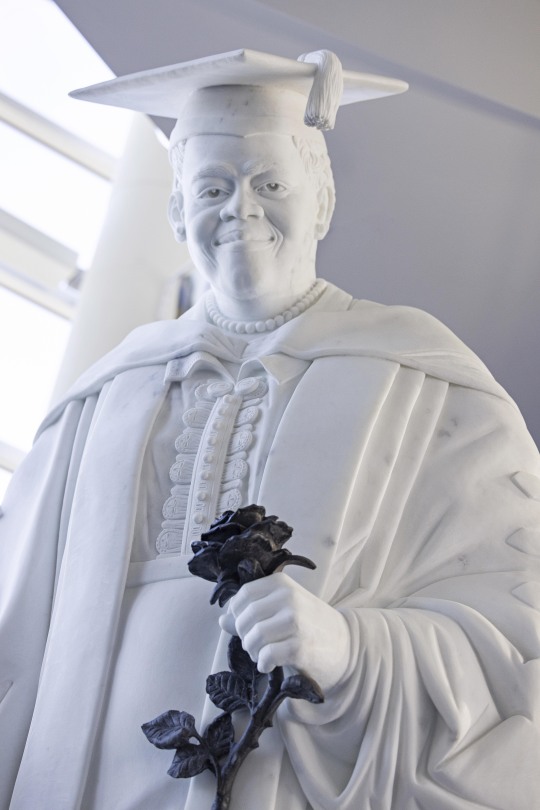


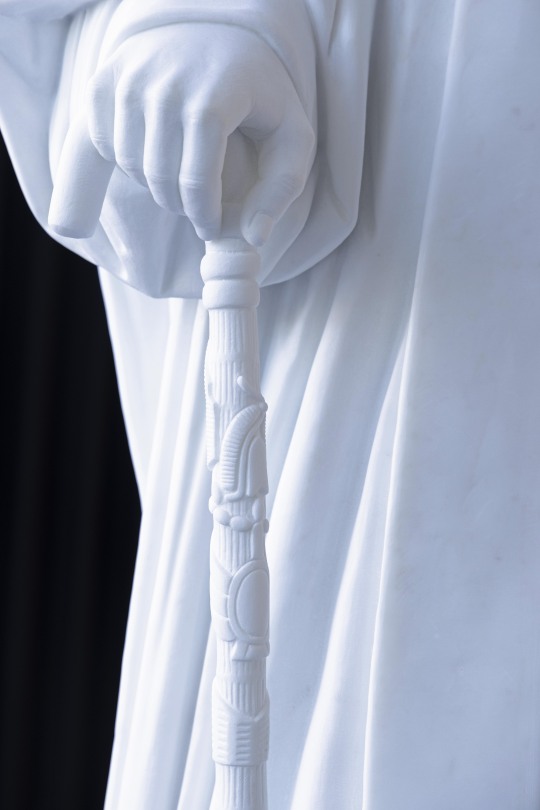



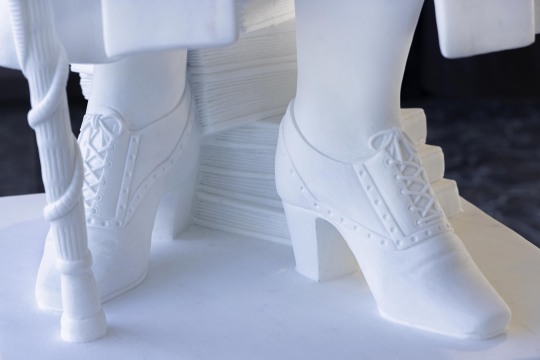
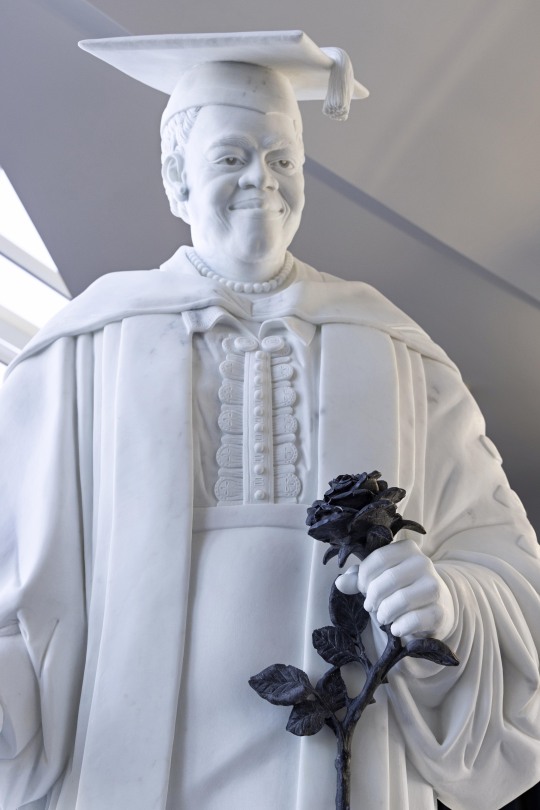
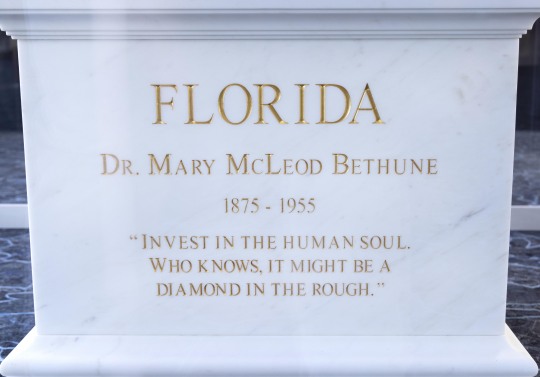
Dr. Mary McLeod Bethune Statue in Florida
A few months ago, I had the opportunity to photograph the larger-than-life marble statue of civil rights pioneer, presidential advisor and renowned Black educator, Dr. Mary McLeod Bethune, at the News-Journal Center in Daytona Beach, FL before it was being transferred to the National Statuary Hall at the U.S. Capitol. As the first state-commissioned statue of an African American, this project was led by University of Florida alum Bob Lloyd and sculpted by artist Nilda Comas, the first artist of Puerto Rican descent commissioned to sculpt a statue for the National Statuary Hall Collection.
The statue is made of Italian Carrara marble and carved by Comas in Pietrasanta, Italy. The combined statue and pedestal are 11 feet tall and weigh 6,129 pounds. Comas depicts an imposing, mature Bethune looking slightly downward, as though at a child. Her benevolent smile conveys her determined yet gentle demeanor. She holds a walking stick in her right hand and a black marble rose in her left, and she wears academic garb, including a mortarboard cap and tassel and a long robe. A dress with embroidered collar and lace details and a simple pearl necklace are visible below the open robe. Her shoes, with laces and sturdy heels, evoke pairs she wore when photographed in similar attire.
Dr. Mary McLeod Bethune was the founder of Bethune-Cookman College, Florida’s first institution of higher education for African Americans. Dr. Bethune’s statue replaced the statue of Confederate General Edmund Kirby Smith in the Capitol’s Statuary Hall.
#mary mcleod bethune#statue#bethune cookman college#florida#daytona beach#marymcleodbethune#bethunecookmanuniversity#ufalumni#boblloyd#adayeinthelife#national statuary hall#us capitol#bcc#national statuary hall collection#nildacomas#italian carrara marble#marble#educator#civilrights#comas#carrara marble
5 notes
·
View notes
Photo

Statues of the National Statuary Hall Collection
by u/Udzu
44 notes
·
View notes
Text
Willa Cather will be the first Pulitzer Prize winner and the 12th woman represented in the National Statuary Hall Collection in the United States Capitol in Washington, D.C.
Cather once said in an interview, “I had searched for books telling about the beauty of the country I loved, its romance, and heroism and strength and courage of its people that had been plowed into the very furrows of its soil, and I did not find them. And so I wrote ‘O Pioneers!.’
12 notes
·
View notes
Text

Texas Jack Omohundro
Will Rogers, who died on this day in 1935, was the very definition of American.
Born to a Cherokee Nation family in Oologah, Indian Territory (now Oklahoma), Rogers joked that though his ancestors didn't come over on the Mayflower, they "met the boat".
Dog Iron Ranch, the property of Will's father Clement Vann Rogers, had as many as 10,000 Texas longhorns, and Will, the youngest of eight children, grew up in the saddle. An avid reader and good student, Will quickly decided that the saddle was more comfortable than the school desk, and, after dropping out of school in the 10th grade, worked his father's ranch full time.
When he was 22 years old, Will and a friend set off from Oklahoma to Argentina, sure that their cowboy skills would serve them well as gauchos on the Argentine Pampas. They bought a ranch and worked for five months before running out of money. Unwilling to return home and face his father's disappointment, Will boarded a boat to South Africa, where he got a job as a rancher at Mooi River Station.
Soon, a Wild West Circus passed through the area and Will Rogers went to see the show, intent on asking for a job handling the show's livestock. Rogers would later tell a reporter for the New York Times:
"Texas Jack had a little Wild West aggregation that visited the camps and did a tremendous business. I did some roping and riding, and Jack, who was one of the smartest showmen I ever knew, took a great interest in me. It was he who gave me the idea for my original stage act with my pony. I learned a lot about show business from him. He could do a bum act with a rope that an ordinary man couldn't get away with, and make the audience think it was great, so I used to study him by the hour, and from him, I learned the great secret of the show business—knowing when to get off. It's the fellow who knows when to quit that the audience wants more of."
This Texas Jack was not John B. Omohundro. Actually, no one, not even the man himself, knew this Texas Jack's real name. He was born sometime between 1863 and 1867, and his parents had been killed when their wagon train headed west was ambushed, reportedly by a Comanche raiding party. The child had been taken captive, along with two young girls from another family's wagon, but was rescued by the cowboy Texas Jack Omohundro, who delivered the children to a Kansas orphanage, selling the Comanche ponies to provide funding for the children's education. The boy grew up not knowing his name or the names of his parents, only knowing that the man who rescued him was called Texas Jack. After Omohundro's 1880 death, this young man showed up at the Omohundro home in Palmyra, Virginia, asking for the family's blessing to use his rescuer's name as he set off on his own venture into show business.
Initially called Texas Jack Junior, by the time he had established himself as a performer in America and Europe he dropped the "Junior" entirely. By the time Will Rogers asked for a job in Ladysmith, South Africa, his show was billed as Texas Jack's Wild West Circus. According to Rogers, he asked the circus owner if he was really from Texas, if he was related to the famous Texas Jack from the dime novels, and if he had any jobs wrangling horses for the show. Jack Jr. asked the young man if he could put together a rope trick act. The young man said he believed he could and Jack Jr. hired him on the spot, suggesting the young performer adopt the nickname “The Cherokee Kid”. Performing the same lasso act that Texas Jack Omohundro introduced to the world thirty years earlier, this was Will Rogers’ first job in show business.
Will Rogers died in a plane crash with aviation pioneer Wiley Post in Alaska on August 15th, 1935. Before his death, the State of Oklahoma commissioned a statue of him to place in the United States Capital's National Statuary Hall collection. Rogers agreed on the condition that his statue face the House Chamber so that Rogers could "keep an eye on Congress." Since the statue's installation in 1939, each President of the United States of America has rubbed the Will Rogers statue's left foot for good luck before stepping into the House Chamber to deliver the State of the Union address.
[Pictured from left to right: Texas Jack Junior, Lyle Marr (TJ Jr's wife), Clarence Welby Cooke, and Will Rogers.]
5 notes
·
View notes
Text
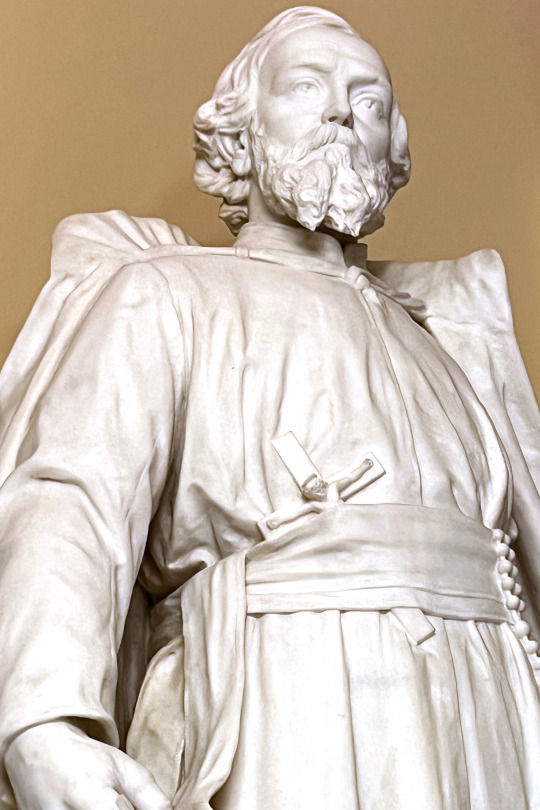
The Father Marquette statue represents the State of Wisconsin in the U.S. Capitol's National Statuary Hall Collection.
7 notes
·
View notes
Text
First Black American Honored in U.S. Capitol’s Statuary Hall
For the first time, a Black American is being honored with a state-commissioned statue in the U.S. Capitol’s Statuary Hall. Each of the states gets to contribute two statues of prominent citizens for permanent display in the hall and now one of Florida’s contributions is a likeness of educator, humanitarian, and civil rights pioneer Mary McLeod Bethune.
Born to formerly enslaved parents in 1875, Bethune went on to found a private school in Daytona, Florida, for African-American students that would later become Bethune-Cookman University. She was also the sole Black woman to officially be a part of the U.S. delegation that created the United Nations.
The unveiling of the statue was attended by a bi-partisan collection of congressional leaders as well as other lawmakers and activists. The decision to honor Bethune with a statue in the hall was made in 2018 and it is replacing one of a Confederate general.
Source: CNN
Photo credit: Wikimedia Commons / public domain
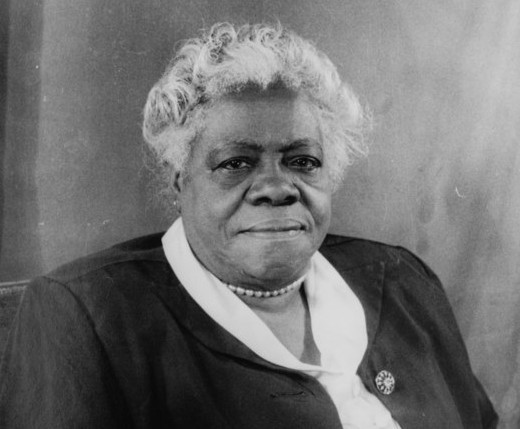
2 notes
·
View notes
Text
Black Sculptor Littleton Alston Makes History at the US Capitol

Last week, Littleton Alston’s sculpture of writer Willa Cather was unveiled at the United States Capitol in Washington, DC, where the likeness of a slavery supporter once stood. Alston is the first Black artist to be featured in the National Statuary Hall Collection, selected from over 70 artists who competed to design and construct the statue of Cather, the 12th woman to be represented in the collection.
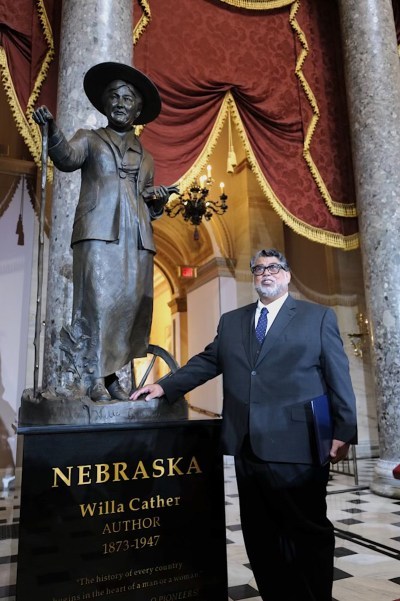

0 notes
Text
🎨#ArtIsAWeapon
Via @washingtonpost
"Art at Capitol honors 141 enslavers and 13 Confederates. Who are they?
The Post examined more than 400 statues, paintings and other artworks in the U.S. Capitol. This is what we found.
▪︎One-third of the artworks in the Capitol depict enslavers or Confederates.
▪︎Of the 31 people identified in the painting “General George Washington Resigning His Commission,” displayed in the Capitol Rotunda, 19 were enslavers.
When the 118th Congress is sworn in on Jan. 3, its members will walk the halls of a building whose paintings and statues pay homage to 141 enslavers.
As part of a year-long investigation into Congress’s relationship with slavery, The Washington Post analyzed more than 400 artworks in the U.S. Capitol building, from the Crypt to the ceiling of the Capitol Rotunda, and found that one-third honor enslavers or Confederates. Another six honor possible enslavers — people whose slaveholding status is in dispute.Congress has made some efforts to address the legacy of slavery since the 2020 protests that followed the death of George Floyd. The 117th Congress — the most diverse in history — established Juneteenth as a national holiday. House Speaker Nancy Pelosi (D-Calif.) had portraits of speakers who participated in the Confederacy removed. Florida replaced a Confederate statue representing the state with one honoring Mary McLeod Bethune, the first African American chosen for the National Statuary Hall Collection.
And on Tuesday, President Biden signed a bill to remove and replace a bust of Supreme Court justice and enslaver Roger B. Taney — infamous for the Dred Scott decision denying Black people citizenship — with one of Thurgood Marshall, the first African American justice.
But a House effort to remove statues honoring Confederates stalled in the Senate. One of those Confederate statues stands in front of the office of the House majority whip, currently occupied by Rep. James E. Clyburn (D-S.C.), the first Black person to serve multiple terms in that role.
Read full story: www.washingtonpost.com/history/interactive/2022/capitol-art-slaveholders-confederates/
https://www.washingtonpost.com/history/interactive/2022/capitol-art-slaveholders-confederates/
#AmericanHistory #ArtHistory #Racism #Slavery
0 notes
Link
Check out this listing I just added to my Poshmark closet: Vintage Tea Towel Kamehameha The Great First King of Hawaii Irish Linen Ireland.
0 notes
Text
Statue of Missouri’s Harry S. Truman dedicated at the U.S. Capitol
Statue of Missouri’s Harry S. Truman dedicated at the U.S. Capitol
U.S. Sen. Roy Blunt, a Missouri Republican, speaks at the dedication of a statue of President Harry S. Truman in the U.S. Capitol Rotunda on Sept. 29, 2022. The statue of Truman will represent the state of Missouri in the National Statuary Hall Collection. (Photo by Ariana Figueroa/States Newsroom)
WASHINGTON — The eldest grandson of President Harry S. Truman pulled down a black cloak to unveil a…
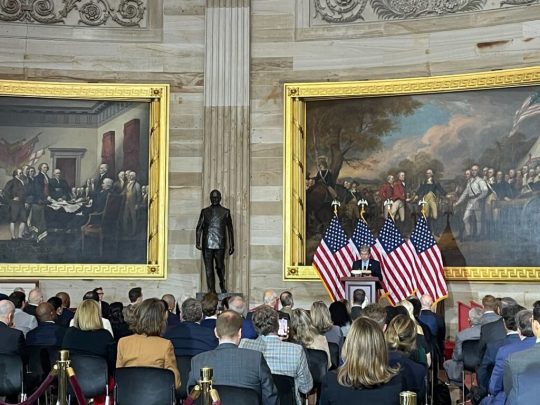
View On WordPress
0 notes
Text
Puerto Rican Nilda Maria Comas makes the first statue of a black person in the Capitol collection
Puerto Rican Nilda Maria Comas makes the first statue of a black person in the Capitol collection
Miami – The statue made by the Puerto Rican sculptress Nilda Maria Comas African-American civil rights leader Mary McLeod Bethune replaced this Wednesday in the United States Congress that of the confederate general Edmund Kirby-Smithconsidered a racist.
It is the first statue of a black person that the National Statuary Hall of the Capitol has, a special pavilion where each state is entitled to…
View On WordPress
0 notes
Text
Day Five
We’ve passed the halfway point of the tour and woke up ready for more DC adventures on day five. Instead of boarding our buses as usual, our entire group set off to the Metro station next door to the hotel and rode the subway train to the US Capitol building. Many in our group had never ridden on the subway before, so that made the short trip even more exciting. (It was also made easier by the fact that no one was on the Metro at 8 AM because federal offices were closed in observation of Juneteenth.)

We emerged from the Metro station and walked to the US Capitol Visitors Center on the lower level of the building, pausing along the way to gawk at the sheer size of the structure. (It’s A LOT bigger and more impressive when you see it in person.) After going through security, we entered the Visitors Center with its many statues donated by individual states. Each state can contribute two bronze or marble statues to the Capitol commemorating important people from the state who are no longer living. (Indiana’s contributions are Oliver P. Morton, governor of Indiana during the Civil War and Lew Wallace, author of Ben Hur.) While the statues all used to be housed in National Statuary Hall, the collection grew too large over the years as more states were added to the Union, so they are now placed in various locations across the Capitol complex. Two of the more interesting ones in the Visitors Center are the massive gold & bronze statue of King Kamehameha from Hawaii and the statue of a young Helen Keller discovering communication for the first time through the use of water (contributed by the state of Alabama).
After a short video on the history and importance of the US Capitol, we met our guide and donned our headsets (the guides talk into the headsets during the tour since there are so many groups touring the Capitol at the same time). Our first stop was the crypt. Despite its name, there is no one actually buried in the crypt - although the original use was to be an entrance to George Washington’s tomb. Washington, however, wanted to be buried at his Mount Vernon home. Instead, its architecture helps to support the massive dome of the Rotunda directly above it.
We then made our way up the stairs to the Rotunda of the US Capitol. We were amazed by the sheer size of the dome. (Again, seeing it on TV does not convey just how massive it really is.) 96 feet in diameter and 180 feet from the floor to the canopy, the dome was completed in 1866. Upon their deaths, many US presidents, senators, Supreme Court justices, and military generals have lain in state on the floor of the rotunda (Lincoln, Kennedy, John McCain, & Ruth Bader Ginsburg to name a few). Some influential Americans without military or political backgrounds - Rosa Parks, Billy Graham - have lain in honor beneath the Rotunda dome.

In addition to the impressive dome, the Rotunda is also home to 8 original historic paintings lining its walls, including the famous “Declaration of Independence” painted by John Trumbull which is also depicted on the back of the $2 bill.
Next, we made our way into National Statuary Hall, previously the site where the House of Representatives met until 1857 when they outgrew the space and the House moved into their present-day home. All of the states’ statues were housed there from 1857-1933 when, due to the growing size (and weight) of the collection, the statues were moved into other parts of the Capitol. Among those remaining in Statuary Hall include Thomas Edison (Ohio), Lewis Cass (Michigan), & Rosa Parks (statue commissioned by the Senate). The public tours end with Statuary Hall, so we made our way to the obligatory gift shop and then walked to see the outside of the Supreme Court and get a group picture in front of the Capitol.
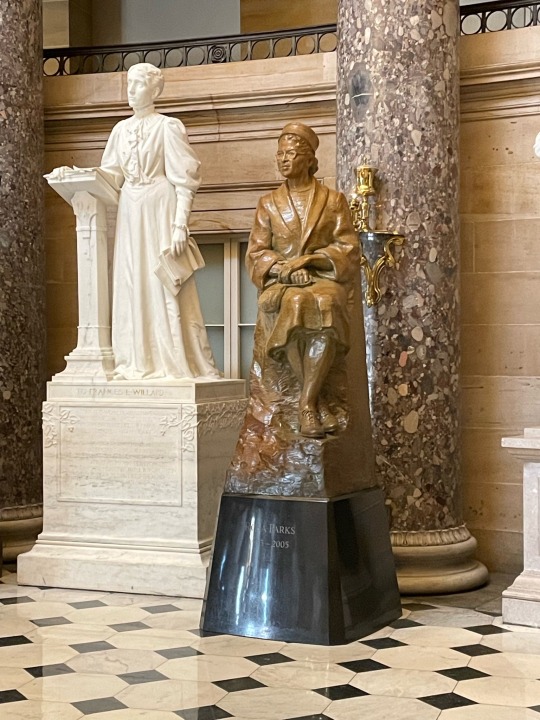
Many streets are closed around the Capitol, so after a long walk back to our waiting buses, we headed to the Jefferson Memorial where LCC gave a short performance on the steps of the monument for all those visiting the memorial to the nation’s third President.
We then headed north of the city to the area near Catholic University where we had a chance to eat a leisurely lunch in chaperone groups. We then made the short trek to our next concert location, the Basilica of the National Shrine of the Immaculate Conception.
There may not be enough superlatives to describe seeing the Basilica for the first time. Not only is the outside impressive, but the inside of the church is indescribably beautiful. Begun in 1920 and finished in 2017, the Basilica, which is the largest church in North America and one of the top 10 largest churches in the world, boasts of 80 chapels and millions of individual glass mosaic pieces adorning every chapel and ceiling with over 15 million included on the massive center dome alone. The mosaics are unique in so far that they depict modern saints and events in church history, including Pope John Paul II and Saint Teresa of Calcutta, and represent Mary, Mother of God, as she is depicted in dozens of countries around the world. The Basilica has also hosted three popes (John Paul II, Benedict, & Francis) and has hosted the wedding of President Johnson’s daughter and the funeral of Supreme Court Justice, Anthony Scalia (although weddings and funerals in the Basilica are rare). LCC was honored to present a concert in this historic and beautiful church.
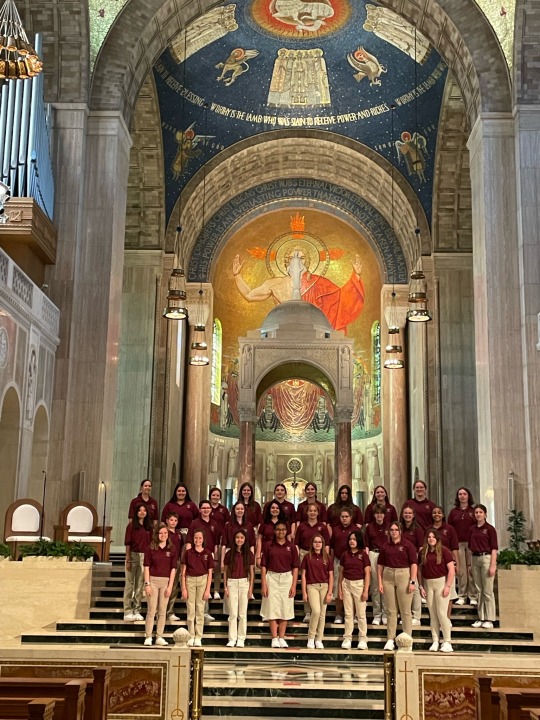
Following our concert, we headed south to Alexandria, Virginia’s Old Town where we had a chance to visit the cute (but expensive!) shops, listen to the live music, and relax along the waterfront before our group dinner at Chadwick’s Restaurant. After a delicious meal, we boarded our buses once again and headed back to the Marriott for one last night and the end of tour day five.
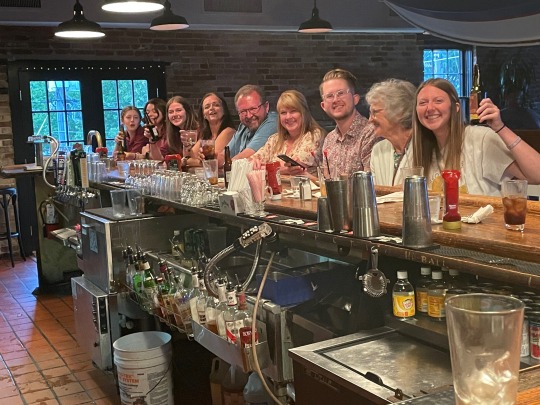
0 notes
Text
Mary McLeod Bethune
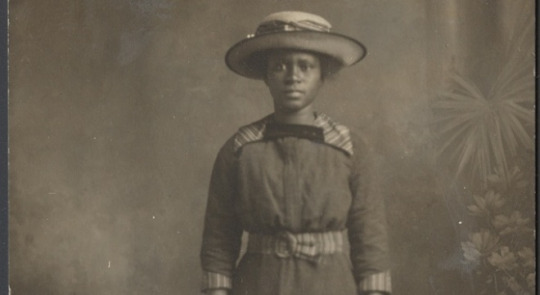

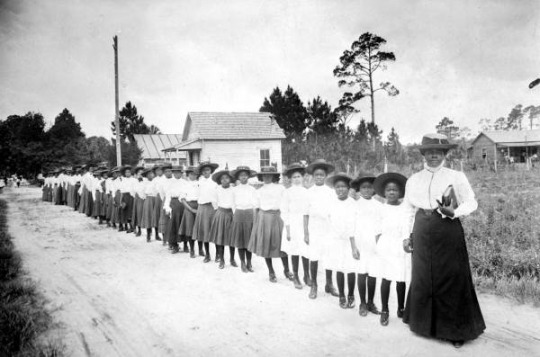



Mary Jane McLeod Bethune (born Mary Jane McLeod; July 10, 1875 – May 18, 1955) was an American educator, stateswoman, philanthropist, humanitarian and civil rights activist best known for starting a private school for African-American students in Daytona Beach, Florida. She attracted donations of time and money, and developed the academic school as a college. It later continued to develop as Bethune-Cookman University. She also was appointed as a national adviser to president Franklin D. Roosevelt as part of what was known as his Black Cabinet. She was known as "The First Lady of The Struggle" because of her commitment to gain better lives for African Americans.[1]
Born in Mayesville, South Carolina, to parents who had been slaves, she started working in fields with her family at age five. She took an early interest in becoming educated; with the help of benefactors, Bethune attended college hoping to become a missionary in Africa. She started a school for African-American girls in Daytona Beach, Florida. It later merged with a private institute for African-American boys, and was known as the Bethune-Cookman School. Bethune maintained high standards and promoted the school with tourists and donors, to demonstrate what educated African Americans could do. She was president of the college from 1923 to 1942, and 1946 to 1947. She was one of the few women in the world to serve as a college president at that time.
Bethune was also active in women's clubs, which were strong civic organizations supporting welfare and other needs, and became a national leader. After working on the presidential campaign for Franklin D. Roosevelt in 1932, she was invited as a member of his Black Cabinet. She advised him on concerns of black people and helped share Roosevelt's message and achievements with blacks, who had historically been Republican voters since the Civil War. At the time, blacks had been largely disenfranchised in the South since the turn of the century, so she was speaking to black voters across the North. Upon her death, columnist Louis E. Martin said, "She gave out faith and hope as if they were pills and she some sort of doctor."
#Mary McLeod Bethune#Bethune-Cookman#first lady of the struggle#african american women#franklin d. roosevelt#daytona beach#florida#National Statuary Hall Collection#american history#american women
48 notes
·
View notes
Text
Pioneering Black educator's statue to replace Confederate statue at the Capitol

The statue of Mary McLeod Bethune, a civil rights activist born to former slaves, will represent Florida in the National Statuary Hall Collection, starting in 2022.
Civil rights activist and Bethune-Cookman University founder Mary McLeod Bethune will soon make history again.
She will be the first Black person to represent a state in the National Statuary Hall Collection at the U.S. Capitol in Washington, D.C. The renowned educator’s Florida-commissioned statue will be placed permanently in the Capitol in February 2022, replacing the statue of a confederate general.
Standing at 11 feet tall and weighing in at 6,000 pounds, the statue shows Bethune in a cap and gown to signify her dedication to education. It also features a stack of her own books piled next to her. A smaller bronze version will also be placed in Riverfront Park near Mary McLeod Bethune Boulevard.
The statue was created by Nilda Comas, a decorated sculptor who splits her time between Fort Lauderdale, Florida, and Pietrasanta, Italy. She will be the first Latina sculptor with a piece in the Capitol’s collection, according to NPR.
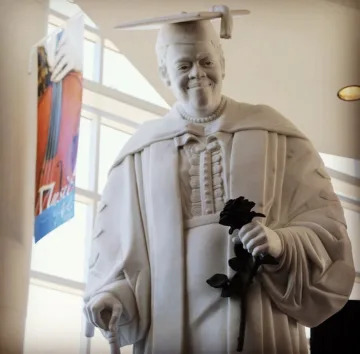
In 2016, then-Gov. Rick Scott approved a measure to remove the statue of Confederate Gen. Edmund Kirby Smith, who was born in Florida, from the Statuary Hall. The bronze was removed in September and temporarily transported to a Florida museum.
The Florida Department of State’s Division of Arts and Culture reviewed the names of more than 3,000 Floridians to replace that statue, narrowing it down to 130 potential subjects. It chose Bethune after receiving 1,233 votes in favor of her to represent the state, according to Evolve Magazine, a business publication based in Florida. The statue was temporarily on display at the Daytona State College’s News-Journal Center until Dec. 12 and will be shipped to Washington.
“Dr. Bethune embodies the very best of the Sunshine State — Floridians and all Americans can take great pride in being represented by the great educator and civil rights icon,” U.S. Rep. Kathy Castor, D-Fla., said in a statement.
Who was Mary McLeod Bethune?
Born in South Carolina in 1875, Bethune was one of 17 children. Her parents were formerly enslaved and the family picked cotton to make a living. Nonetheless, Bethune was committed to her education. She eventually graduated from Scotia Seminary, a Presbyterian boarding school for Black girls, in 1894.

Next, she went north to Chicago to study at the Moody Bible Institute, with the goal of doing missionary work in Africa. At the time, she was the only Black student enrolled. There, she established Sunday schools in neglected parts of Chicago, worked with prisoners in city jails, and helped with the Pacific Garden Mission, which housed and fed hundreds of people each day.
When she sought an opportunity for mission work in Africa, the Presbyterian Board of Missions denied her request and instead sent her to Georgia, where she worked at a school for Black girls. Soon after, she married Albert Bethune, and eventually the couple and their child moved to Florida. While teaching in Palatka, Florida, she learned of the poor living and educational conditions of Black residents of Daytona Beach.
Soon, Bethune started a school in Daytona with a commitment to provide Black girls a higher quality education.
5 notes
·
View notes
Text
If you think about it, the United States has allowed for the normalization of the symbols of white nationalism (i.e., the Confederacy) throughout our culture to the point that the current president is arguing that these symbols represent the United States itself
Trump’s recent tweets in opposition to renaming military bases that carry the names of Confederate officers was appalling on many levels. After all, those names symbolize the Confederacy, which was an attempt at the creation of a white nationalist state. That Trump and many other Americans consider such symbols of the Confederacy to be a “part of” our “Great American Heritage” is more than unsettling.
To show more fully how disturbing this is, I’m going to use an analogy. After WWII the symbols of the Nazi state were banned in Germany. But let’s pretend the Germans hadn’t done so.
Can you imagine decades after WWII if the “Sons of Nazis” were still proudly marching down German streets at local parades carrying Nazi swastika flags?
Yet even in recent times in the U.S. the Sons of Confederate Veterans have proudly marched in parades in many parts of the South (although that appears to be changing).
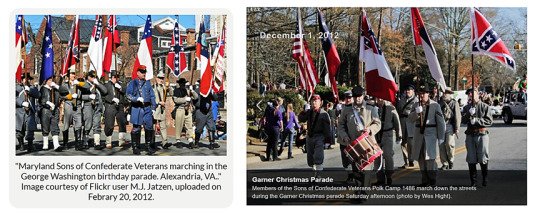
* * *
Can you imagine German entrepreneurs in the 21st century selling lots of T-shirts and clothing items with the Nazi swastika flag on them?
And yet, to this day, 155 years after the Civil War, entrepreneurs in the U.S. sell lots of T-shirts and clothing items with Confederate flags on them.

* * *
Imagine if decades after WWII the statues of Nazi politicians and military officers were still prominently displayed in German government halls and squares--including the capital in Berlin? Wouldn’t that suggest that those Nazis were still venerated by Germans?
And yet throughout the United States, there are numerous statues and memorials dedicated to the Confederacy. Perhaps most egregiously, there are 9 statues of Confederate politicians/judges and military officers that are part of the National Statuary Hall Collection in Washington, DC. Fortunately, two of these statues are going to be replaced (Uriah Milton Rose and Edmund Kirby Smith) but at this point seven will remain, including Jefferson Davis and Robert E. Lee.
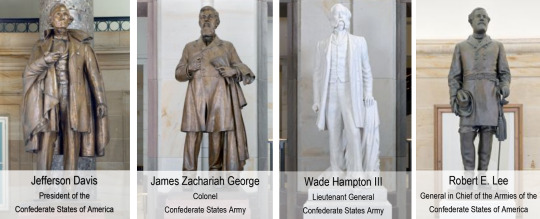

Adding to the problem in the United States is the fact that the numerous monuments to the Confederacy are continuing to be paid for by American taxpayers. For instance, a December 2018 article in Smithsonian claimed that:
“Confederate monuments aren’t just heirlooms, the artifacts of a bygone era. Instead, American taxpayers are still heavily investing in these tributes today. We have found that, over the past ten years, taxpayers have directed at least $40 million to Confederate monuments—statues, homes, parks, museums, libraries and cemeteries—and to Confederate heritage organizations.”
[See more under the cut.]
Can you imagine if for decades after WWII a Nazi swastika flag was proudly displayed at one of Germany’s statehouses and that only recently was this flag taken down? And what if one of its states still had the swastika as an integral symbol on its state flag? Wouldn’t the rest of the world be questioning the values of those German states?
Yet here in the U.S. up until recently the Confederate flag had flown on top of or near the South Carolina Statehouse. Furthermore, the Confederate flag’s design has continued to be an integral part of the state flag of Mississippi. (although a bipartisan group of legislators is trying to change that).
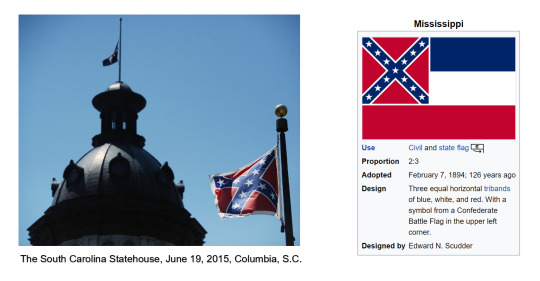
* * *
Can you imagine that up until last week, Nazi swastika flags were flying at race car events in Germany? What sort of message would that send to the world about German enthusiasts of that sport?
And yet until this past week, Confederate flags flew at NASCAR events. (Sadly, there has been considerable push back towards the ban since it was announced.)
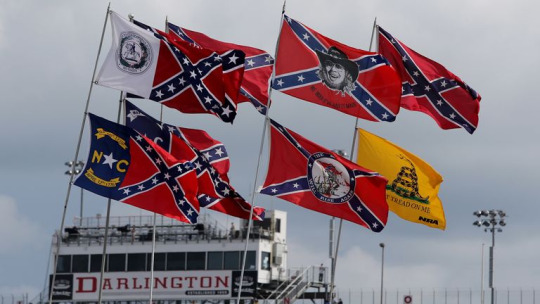
* * *
I could go on and on with this analogy. There are schools and roads named for Confederate politicians and military officers, not to mention the military bases named for Confederate officers that Trump refuses to rename:

By keeping all of this Confederate symbolism in place for 155 years since the Civil War ended, what sort of a message does our nation send to the world about our values?
What messages are being sent to African Americans and other American POC regarding our society’s values?
It is frightening to me that all of this has been so normalized in our culture that there are many Americans (including the current president) who are very upset that anyone wants to get rid of the Confederate symbols that are still plentiful in our nation.
[edited]
#confederate symbols#united states#trump#black lives matter#military bases#values#confederate statues and flags#racism
111 notes
·
View notes
Photo
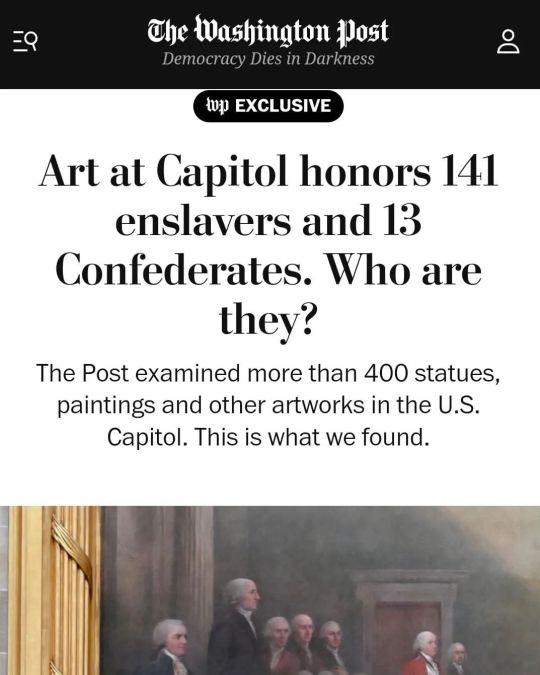
🎨#ArtIsAWeapon Via @washingtonpost "Art at Capitol honors 141 enslavers and 13 Confederates. Who are they? The Post examined more than 400 statues, paintings and other artworks in the U.S. Capitol. This is what we found. ▪︎One-third of the artworks in the Capitol depict enslavers or Confederates. ▪︎Of the 31 people identified in the painting “General George Washington Resigning His Commission,” displayed in the Capitol Rotunda, 19 were enslavers. When the 118th Congress is sworn in on Jan. 3, its members will walk the halls of a building whose paintings and statues pay homage to 141 enslavers. As part of a year-long investigation into Congress’s relationship with slavery, The Washington Post analyzed more than 400 artworks in the U.S. Capitol building, from the Crypt to the ceiling of the Capitol Rotunda, and found that one-third honor enslavers or Confederates. Another six honor possible enslavers — people whose slaveholding status is in dispute.Congress has made some efforts to address the legacy of slavery since the 2020 protests that followed the death of George Floyd. The 117th Congress — the most diverse in history — established Juneteenth as a national holiday. House Speaker Nancy Pelosi (D-Calif.) had portraits of speakers who participated in the Confederacy removed. Florida replaced a Confederate statue representing the state with one honoring Mary McLeod Bethune, the first African American chosen for the National Statuary Hall Collection. And on Tuesday, President Biden signed a bill to remove and replace a bust of Supreme Court justice and enslaver Roger B. Taney — infamous for the Dred Scott decision denying Black people citizenship — with one of Thurgood Marshall, the first African American justice. But a House effort to remove statues honoring Confederates stalled in the Senate. One of those Confederate statues stands in front of the office of the House majority whip, currently occupied by Rep. James E. Clyburn (D-S.C.), the first Black person to serve multiple terms in that role. Read full story: www.washingtonpost.com/history/interactive/2022/capitol-art-slaveholders-confederates/ #AmericanHistory #ArtHistory #Racism #Slavery (at US Capitol Building) https://www.instagram.com/p/CmulI1OvCUa/?igshid=NGJjMDIxMWI=
0 notes